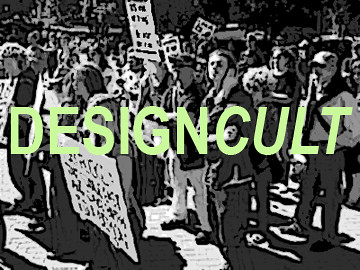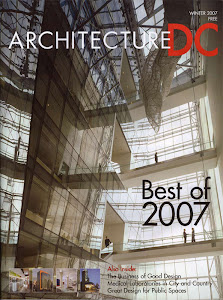 If there is a single noticeable feature of DC that distinguishes it from most other major cities, it is the skyline...or the lack thereof. This lack of a skyline is the result of the DC Height Act of 1910, which was the subject of a recent DC Building Industry Association (DCBIA) meeting, where presenters Steven Sher, Roger Lewis, FAIA, and Don Hawkins provided an overview of the Height Act and varying views regarding its place in history and its relevance today.
If there is a single noticeable feature of DC that distinguishes it from most other major cities, it is the skyline...or the lack thereof. This lack of a skyline is the result of the DC Height Act of 1910, which was the subject of a recent DC Building Industry Association (DCBIA) meeting, where presenters Steven Sher, Roger Lewis, FAIA, and Don Hawkins provided an overview of the Height Act and varying views regarding its place in history and its relevance today.Don Hawkins, Chairman of the Committee of 100 of the Federal City and the requisite nay-sayer of the DCBIA event asserted that the need for greater height in the district does not exist, and until such time that the city is out of land for development, that revisions and amendments to the Height Act need not be considered. Furthermore, much of his disdain regarding the consideration of amending the act derives from his, and others, reverence of Pierre Charles L'Enfant's vision for the city of Washington.
One has to consider this question of 'need', however. The mere availability of development sites is an evasive credential upon which to assess the worthiness of the height limit, because such an argument does not take into account relevant issues such as supporting resources and infrastructure. Introducing greater densities in undeveloped areas of the city in lieu of rethinking the potential of our central business district would require the addition of and upgrades to the transportation, services, and utilities in these areas. Why not take advantage of the established elements that existing in our CBD? But this is not an issue, as all presenters agreed, based upon practicality or need alone.
Despite that the primary reason the height act was established was one of concern for public safety in light of technologies at the time (technologies which have obviously been improved upon and should no longer have a bearing on building height restrictions), the notion of the heights as a significant aesthetic contribution to the development of DC has fueled much of the existing justification for not reconsidering the act. Opposing arguments champion L'Enfant's vision for the city, further reinforced by the McMillan plan, embodying the City Beautiful ideal of classical monumentality, suggesting low-rise development as a socially responsible urban movement. Of course it is relevant to note that L'Enfant's vision for Washington was not fully embraced by the District Commissioners, who ultimately dismissed L'Enfant. Notwithstanding, basing the argument of low-height development on the proposed vision of L'Enfant creates certain anachronisms. It is quite unlikely that L'Enfant's late eighteenth century concept for the city could have considered the technologies and potential building heights of a twentieth and twenty-first century city. While undoubtedly the beauty of the L'Enfant plan lies in the axial views and vistas that he imagined, these views are not affected by the greater development of the block, but rather are a consequent of the void between these blocks. As presenter Roger Lewis has asserted in a recent article of his 'Shaping the City' column in the Washington Post, the DC Height Limit, and in fact the L'Enfant plan itself, is not sacred. Lewis' recommendation is that the height limits be reconsidered, but thoughtfully, where it makes aesthetic and economic sense. Careful considerations of the zoning would be a prerequisite to amending or lifting the height limit, and would allow for the creation of architectural monuments at key locations, such as at significant intersections and the circles which are prevalent throughout the city, to create, as Lewis puts it, a "more undulating urban fabric and skyline". It is clear as well that this is not just a questions of appropriate heights, but also a matter of appropriate densities, which the zoning would necessarily continue to govern.
I for one am a proponent of amending or eliminating the DC Height Act. I fully agree with the suggestions made that allowing for greater height in the District should be accompanied by new design guidelines and a thoughtful approach to where such increases in allowable height make sense. It is important to acknowledge that relief of the height act does not mean creating a 'free for all' with regards to new buildings. Even in cities where building heights are much greater than they would be in the District, the heights are not all uniform, but vary from building to building. It's simply not realistic to expect that the height of every building would suddenly be increased. But certainly the fears of opponents seem based on such expectations.
But beyond the practical reasons, the overwhelming notion for raising the allowable heights for buildings in the District is aesthetic. There is a noticeable lack of height in the District, one that I don't feel is a pleasing consequence, but rather a let down. Take a walk around the Golden Triangle area, K Street, up 18th Street, or even around the area allowed the greatest height along Pennsylvania Ave., and the overwhelming characteristic is the rise of the building from the ground and then the sudden, deliberate termination as prescribed by the height act. There is an allure of city buildings, of towering beauties, of buildings whose wide stance at street level is appropriately balanced by their stature, that is absent in our capital city. DC as a vertical city is an appealing notion. There are many times that I've driven into the city via the Fourteenth Street bridge and seen the Jefferson Memorial and Washington Monument and imagined a backdrop of a skyline fitting of this great city. A skyline which does not interfere, but which enhances the compositions of the city, and would be a new symbol to this modern capital city and its strength. Just as we as residents have become the benefactors of the great monuments which already grace our city, we could embrace with pride these monuments to our city's achievements. There is both a romanticism as well as a symbolism that is evoked by a great skyline. When I lived in Norfolk, VA after graduating from Architecture School, I rented an apartment with a spectacular view of the city's skyline, and my blinds were never closed. If tall buildings make sense in a city of a more modest scale, such as Norfolk, then why not in DC? Don Hawkins likes to pose the question 'Why?' when the suggestion of amending the DC Height Act is made. In response, we pose the question "Why not?".
Poll Results: When we asked our readers if they thought that the DC Height Act of 1910 should be amended to allow for taller buildings in the city, 12 readers (46%) reponded 'yes'; 14 readers (53%) responded 'no' (26 votes total).









I imagine that if the Height Act was to be amended, that developers and architects would go crazy, and we'd see some of the most beautiful, modern architecture. Some ugly stuff too though.
ReplyDeleteDC:The GroundUp